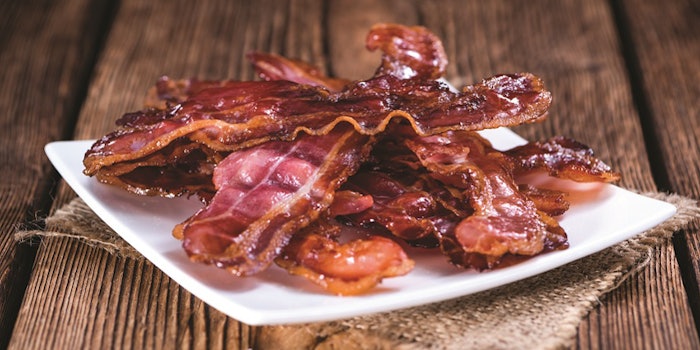
In the rich and varied palette of flavor chemicals available to the adventurous flavorist, it would be hard to find a less popular category than the amines. They are amazingly pungent and difficult to use. Trimethylamine is far and away the most popular, probably used more than all other amines combined, but it is not necessarily always the best choice. The biggest challenge posed by trimethylamine is its very high volatility. In many applications, it boils off entirely and it is very difficult to judge the right level to add to even the least challenging end products. Higher molecular weight amines reduce this problem, but there is a trade-off. They lose some of the bright fishy note and gain a distinctly unattractive musty nuance. There are a dozen obvious alternatives to trimethylamine and it is worth looking at each in turn.
Note that the dose rates given throughout this article are the levels suggested for use in flavors intended to be dosed at 0.05% in ready-to-drink beverages or in a simple bouillon.
Savory Flavors
Bacon: A moderate addition of fishy character to fried bacon flavor can lift the profile, add realism and welcome complexity. Levels vary depending, amongst other things, on the level of smokiness but 2 ppm is a good place to start.
Beef, Roast: Here the addition can be a little more robust. A level of 5 ppm of sec-Butylamine gives roast beef flavors a pleasant hint of “bloody’ character.
Cheese, Blue: In blue cheese flavors the amine note forms a perfect partnership with the methyl ketone complex, giving added impact and definition. Higher levels, around 10 ppm, can be very effective.
Cheese, Cheddar: sec-Butylamine works in all the many styles of cheese flavors but it is most effective in blue cheese and Cheddar cheese styles. The best level for Cheddar cheese flavors depends on the profile and is higher in “sharper” profiles. A level of 2 ppm is a good indication for regular Cheddar flavors, up to 5 ppm for sharp Cheddars.
Fish: White fish and oily fish flavors are the most obvious and natural home for sec-Butylamine. A reasonable starting point is 500 hundred ppm.
Mushroom, Dried: Dried mushrooms, especially dried porcini mushrooms, have a quite significant fishy element to their profile and 100 ppm of sec-Butylamine is typically needed to achieve realism in these flavors.
Pork: Pork flavors vary considerably but roast pork flavors can derive some benefit from a modest addition of this amine, around 2 ppm.
Potato: French fried and potato chip flavors gain added realism from just 1 ppm of sec-Butylamine.
Rice: Cooked rice can be a subtle flavor category but it is enhanced by this amine at levels up to 5 ppm.
Seafood: Here this ingredient really comes into its own. A good starting point is 300 ppm, but even higher levels can be helpful in some flavor types, especially scampi.
Soy Sauce: The ideal level of sec-Butylamine for soy sauce flavors is quite difficult to determine and depends on the other ingredients, especially the pyrazines. Start at 1 ppm and work up slowly.
Tomato: Fishy tomato flavors do not really sound so attractive, but this ingredient has a place even in this category. A very modest addition, around half a ppm, is all that is required.
Other Flavors
Grape: Now, we are away from the savory category it gets quite hard to see the rationale for adding an amine note. This is especially true for fruit flavors, but a trace, around 0.1 ppm, of sec-Butylamine has a surprisingly realistic effect in Concord grape flavors. As a side benefit, it would make a flavor devilishly difficult to match!
Kiwi: If grape flavor was hard to visualize than kiwi is even more a stretch of the imagination. Nevertheless, 0.1 ppm of sec-Butylamine is equally intriguing in this flavor category
Malt: With malt flavors, we are on more solid ground and a moderate addition of 2 ppm of this amine adds lift and realism.
Milk, Condensed: sec-Butylamine is obviously effective in cheese flavors, but it can also work in other dairy flavors. Condensed milk is probably the most obvious and 0.2 ppm is a good level to try.
Rhubarb: Now we are back on more dangerous ground, but 0.1 ppm of this amine is quite effective in lifting rhubarb flavors, especially those intended for yogurt.
Tangerine: sec-Butylamine is quite interesting in all citrus flavors, but it is most effective in tangerine and mandarin flavors. Only a trace, around 0.1 ppm, is required but the effect is intriguing.
Whiskey: In the same way, it is quite interesting to add this amine to any distilled spirit or even wine flavor, but it really comes into its own in whiskey flavors. Half a ppm is a good level of addition.











